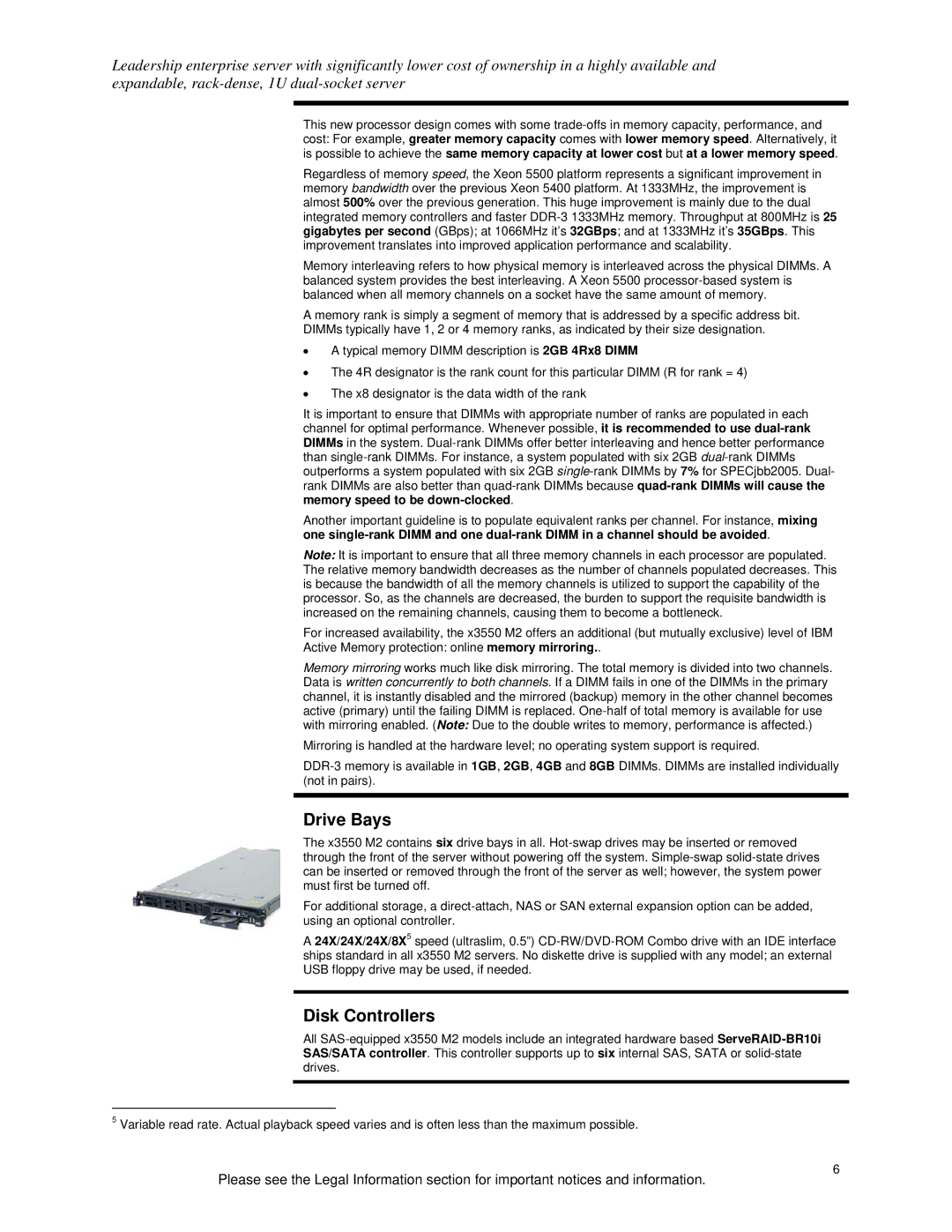
Leadership enterprise server with significantly lower cost of ownership in a highly available and expandable,
This new processor design comes with some
Regardless of memory speed, the Xeon 5500 platform represents a significant improvement in memory bandwidth over the previous Xeon 5400 platform. At 1333MHz, the improvement is almost 500% over the previous generation. This huge improvement is mainly due to the dual integrated memory controllers and faster
Memory interleaving refers to how physical memory is interleaved across the physical DIMMs. A balanced system provides the best interleaving. A Xeon 5500
A memory rank is simply a segment of memory that is addressed by a specific address bit. DIMMs typically have 1, 2 or 4 memory ranks, as indicated by their size designation.
•A typical memory DIMM description is 2GB 4Rx8 DIMM
•The 4R designator is the rank count for this particular DIMM (R for rank = 4)
•The x8 designator is the data width of the rank
It is important to ensure that DIMMs with appropriate number of ranks are populated in each channel for optimal performance. Whenever possible, it is recommended to use
Another important guideline is to populate equivalent ranks per channel. For instance, mixing one
Note: It is important to ensure that all three memory channels in each processor are populated. The relative memory bandwidth decreases as the number of channels populated decreases. This is because the bandwidth of all the memory channels is utilized to support the capability of the processor. So, as the channels are decreased, the burden to support the requisite bandwidth is increased on the remaining channels, causing them to become a bottleneck.
For increased availability, the x3550 M2 offers an additional (but mutually exclusive) level of IBM Active Memory protection: online memory mirroring..
Memory mirroring works much like disk mirroring. The total memory is divided into two channels. Data is written concurrently to both channels. If a DIMM fails in one of the DIMMs in the primary channel, it is instantly disabled and the mirrored (backup) memory in the other channel becomes active (primary) until the failing DIMM is replaced.
Mirroring is handled at the hardware level; no operating system support is required.
Drive Bays
The x3550 M2 contains six drive bays in all.
For additional storage, a
A 24X/24X/24X/8X5 speed (ultraslim, 0.5”)
Disk Controllers
All
5Variable read rate. Actual playback speed varies and is often less than the maximum possible.
Please see the Legal Information section for important notices and information.
6
